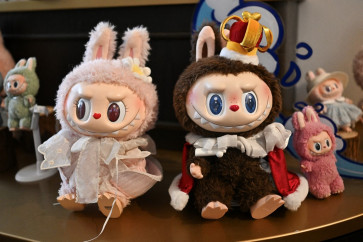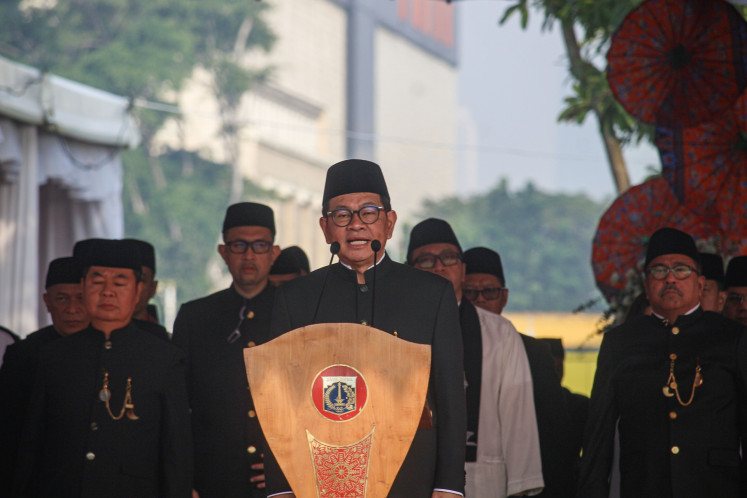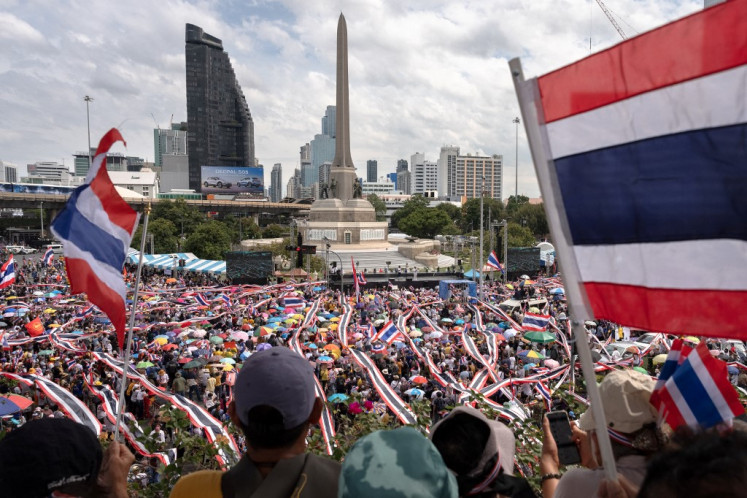Popular Reads
Top Results
Can't find what you're looking for?
View all search resultsPopular Reads
Top Results
Can't find what you're looking for?
View all search resultsThe last horsemen of Denpasar
Old school: Nengah Purno and Joki, the dokar horse, are like time travelers on the streets of Denpasar
Change text size
Gift Premium Articles
to Anyone

Old school: Nengah Purno and Joki, the dokar horse, are like time travelers on the streets of Denpasar.
For the past 50 years, Nengah Purno, with a string of Sumba horses, has held a place at Pasar Badung.
Parked on the corner opposite the market, horses and man have made a living carting produce and people through the years.
Nengah remembers the old days. 'There were hundreds of us here carrying passengers. That was still Sukarno's time. Now, it's all gone to cars and motorbikes,' says Nengah, perched on his cart, known locally as a dokar.
He is alone on this corner; one of the last horsemen of Denpasar. 'There are 15 of us horsemen left of the hundreds from the past. People from the market these days want to travel fast, so they take ojek [motorcycle taxis]. They don't want the slow pace of a dokar.'
'I rarely have people from the market using my dokar. Those who take a ride now are locals going short distances. Tourists I see almost never,' says Nengah, now is his 70s. 'Maybe it's because of the economy. I don't know.'

Added to a need for speed is the problem of feeding the horses. In the past, rice fields were still within trotting distance of Denpasar, offering easily accessible grass feed for the tiny Sumba horses, which work around four hours a day, on average.
'It is so hard to find grass these days. All the old rice fields are under houses now,' says Nengah. 'My horse, Joki, eats grass, which I used to hunt out along the rice field edges ' but now there is very little grass to be had.'
He says the outlook is grim. 'In the future, we won't have dokar, because there are the needs of the horses ' feed, water ' and lots of cars taking their place on the roads.'
Casting his mind back to 1963, when he made the move from Karangasem in Bali's northeast to Denpasar in search of work, Nengah remembers a quiet city bounded on all sides by rice fields, which went from bright green to ripening gold under the sun.
'In 1963, life was happier and the horse feed was free for the taking on the trip from home to the market and then home again in the afternoon. The best transportation then was the dokar,' says Nengah of a time when street sounds were hushed except for the clip clop of hooves on the tarmac and the tinkling of bells as the carts ferried their passengers and wares throughout the city.
As Joki's bells ring and headpiece feathers bob, the dokar weaves in and out of the flow of motorcycles, cars, trucks and busses.

Nengah continues. 'That time was peaceful. Then came the Soeharto years and lots of tourists, big hotels going up, buildings everywhere so the atmosphere changed. It's all changed so much ' everything is moving. Back then people had rice fields, but they sold that for houses and the old ways are all gone.'
As a dokar driver, Nengah does not feel empowered to hold back the march of modernity in his little corner outside the market. 'How can I feel sad if we lose this dokar tradition? I am an ordinary person and there is no support for this horse-and-cart culture. My kid doesn't want to follow me in this lifestyle. They have cars, they want cars, they don't see horses as a way of life.'
However, just a few kilometers away, horsemen have banded together to save local dokar culture Turning to the tourists as their only viable income source, the 42 members of Perdoden, the Unified Horseman's Association of Denpassar, line up along the Kuta beachfront offering rides to tourists.
'There are some people who are against dokar, but we want to see the dokar always here in Kuta,' according to one Perdoden member identified as Amat.
His father was one of the first horse drivers in the city. 'Dad moved over from Denpasar in the 1980s. Even then he could see dokar would not last.'
Only with tourists can the dokar hold on, Amat says. 'Tell people that the dokar still exist here in Kuta ' not because we would otherwise not have jobs, but because of the culture and traditions that are part of the dokar.'
Perdoden has closed its membership rolls. Amat says Kuta can only handle 42 carts. 'Our members can have as many horses as they want, but just 42 dokar carts are allowed in this area. We have rules such as lining up for fares, the front horse takes the fare, then goes to the back of the queue on return. All urine and manure is collected, so the streets do not get smelly and every dokar cart and horse must be in perfect presentation condition.'

A breach of the rules can lead to a two-day suspension. 'We have to be really disciplined and democratic in our group, because otherwise people will have reasons to get rid of dokar here.'
Organizing and focusing on tourists have paid off for Perdoden. Members report greater income, which means that drivers can afford to buy grass harvested by others.
According to another old hand, Mohamed Zorni, the horses are better fed. 'We buy cut grass that is mixed with rice husks, which is like oats, for our horses. The husks make them strong and fat. Without the husks, given only grass to eat they would be thin and too weak to work the four-hour days.'
Zorni said he learned how to manage a horse from his father and grandfather. 'If a horse is off his feed, we call the vet in. If he has sore feet, we wrap the legs with ginger and chili to warm them.'
He speaks, polishing a pair of silver carriage lamps handed down from generation to generation within his family. Hopefully, the lamps will be needed for many years to come.
Meanwhile, Amat also rues the precarious state of the dokar. 'I am sad to see them vanish from Denpasar and the loss of this tradition.'

' Photos by J.B. Djwan









